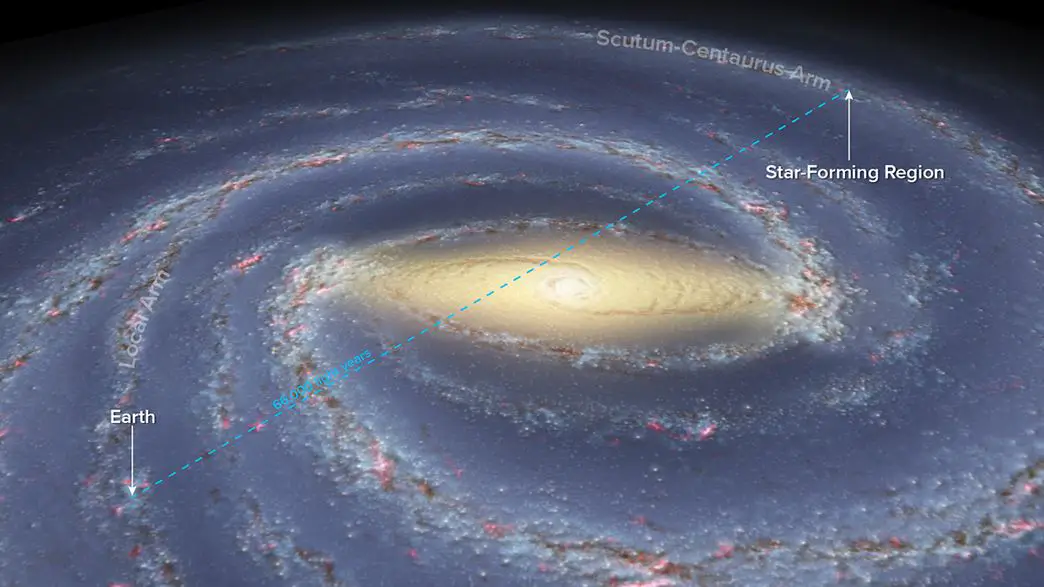By measuring stars’ distance, scientists get closer to revealing the true shape of the Milky Way’s far side.
TL;DR
Using a precise parallax method, scientists measured the distance to a star-forming region 66,000 light-years away on the far side of the Milky Way. This discovery, using the Very Long Baseline Array, confirmed the existence of the Scutum-Centaurus Arm and uncovered its undulating shape. The interstellar dust obstructing visible light made this feat more challenging, but tracking molecules like methanol and water helped scientists achieve this. This is part of a larger effort to map the entire Milky Way, with about a quarter still unexplored, offering more insights into the galaxy’s true structure.
______________
What does our Milky Way look like? You might be surprised to learn that we don’t fully know, particularly its far side. However, a recent discovery might finally give us a clear picture of our galaxy’s true shape.
This groundbreaking discovery, featured in Science, reveals that for the first time, scientists have measured the distance to a group of stars on the far side of the galaxy. This paves the way for a more detailed map of what our Milky Way really looks like.
Using the Very Long Baseline Array (VLBA), a network of 10 telescopes across North America, researchers measured the distance to a remote star-forming region known as G007.47+00.05, located in the Scutum Centaurus Arm of the galaxy. This also confirms the arm’s existence.
Through a technique called parallax, they were able to calculate the distance by observing the angle changes to the region when Earth was on opposite sides of the Sun. A smaller angle signifies a greater distance.
It’s challenging to view the galaxy’s far side due to interstellar dust that obstructs visible light. But in this study, scientists tracked the movement of methanol and water molecules in the distant region.

So, what did they find? The distance to this region is 66,000 light-years, based on observations from 2014 and 2015. The previous parallax record was only 36,000 light-years.
“This measurement is akin to detecting a baseball on the Moon’s surface,” lead author Alberto Sanna from the Max-Planck Institute for Radio Astronomy (MPIfR) in Germany told IFLScience.
“We are effectively measuring the distance to an object on the opposite side of the galaxy relative to the Sun.”
This discovery is part of the broader BASSAL survey, aiming to measure distances to star-forming regions across the Milky Way. Ultimately, the goal is to construct a detailed face-on view of the galaxy within the next decade, from a million light-years away.
Even at this early stage, the far side of the Milky Way is proving interesting. For instance, the star-forming region they studied revealed that the arm it resides in isn’t perfectly flat, but rather has undulations.
Although the VLBA has been operational for years, only now has the parallax method been fine-tuned to achieve this level of precision. The team’s next step is to map out the distances to the remaining uncharted sections of the galaxy, with about a quarter still to explore.





[…] Read more […]